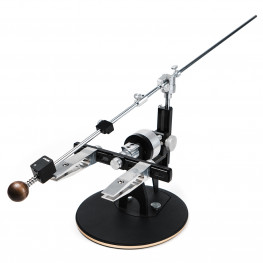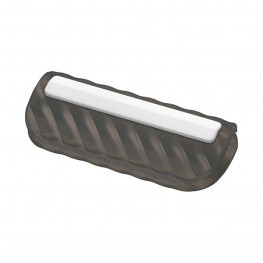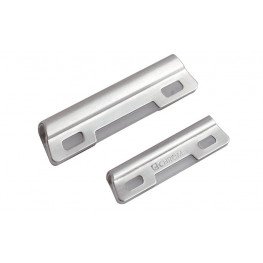Product detail
What stone should I reach for? Is synthetic enough, or do I have to pay extra for the natural one? The question is logical and clear, but the answer is more complicated.
Artificial or synthetic stone is made exactly for its purpose. The whetstone for grinding has a coarse grain, the stone for sharpening is finer and the honing stone will stun you with its fine structure. Each of them is highly efficient, as the material and technology of their production are subject to functionality. Of course, we are talking about quality water whetstones from proven manufacturers, not cheap, mostly Chinese, substitutes.
Synthetic stone has many advantages over natural stone. You can choose the grain size you just need and you are sure that you are getting it. The stone is consistent, which means that across the thickness of the stone you will encounter the same grain size over its entire surface. At the same time, it has a symmetrical shape, which increases the comfort of grinding. And it's incomparably cheaper. So why invest in the natural whetstone?
Grinding is like everything in our lives. In fact, as it should be. It starts gradually. I buy so-called home use stones for my first quality knives. The logo and the real price are a guarantee that they will do their job well. Over time, I gain the necessary skill and intuitively reach for those labeled professional. And as one continues to improve, one seeks further challenges. Therefore, nothing but real Japanese natural stone can follow. Working on it is naturally more difficult and does not belong in the hands of beginners. You must mature for this stone. It is also understandable that a connoisseur who buys hand-forged knives from masters who transform aogami into works of art will want to rub them with natural stone, preferably from the famous quarry in Kyoto.
Natural stone "matured" about 70 million years. From a mineral point of view, it is silicon dioxide and sericite. In the quarries, the blocks are cut horizontally to achieve the most continuous uninterrupted rock layers. Thus the stone acquires its homogeneity. The stones are then formatted to a usable size. However, do not expect a beautifully square and symmetrical shape. You have to pay a lot for such and honestly, it is a waste of money. The stones usually have a broken corner or jagged edges. However, these are just cosmetic beauty flaws without any effect on functionality. It is a natural material, and it looks good on it.
The stones are named after the mountains or quarries from which they were mined. Today, with few exceptions, they are all closed, which is also reflected in the prices of stones. The most sought-after quarries are around the city of Kyoto. The stones from our offer come from Mount Oohira west of Kyoto. The quarry, as one of the few, is still open. Oohira stones have a high reputation and the finest ones are used to polish the blades of Japanese swords.
The grain size of natural stone is referred to as a guide. A reputable supplier does not guarantee that the stone has exactly a granulation of 6000. In the best case, the word used is about 6000, but most often the interval /e.g. 6000-8000/. Sometimes the supplier marks the stones as coarse, medium, fine, honing.
he stones are lubricated with water for longer than synthetic ones. Opinions vary, but most lean to 30 minutes. After use, the stone is rinsed and allowed to dry slowly, not suddenly. Exposure of wet stone to sub-zero temperatures should also be avoided. It could crack.
Many master grinders use only natural stones. The tradition certainly plays an important role here, but materials with a high carbon content are said to feel best on them.
©2010-2019 Copyright Roman Ulík, Nippon Knives, www.japonskenoze.sk, all rights reserved.
Photographs and texts are protected by copyright and their use is not possible without the author's consent.


 Sign in
Sign in Registration
Registration







































